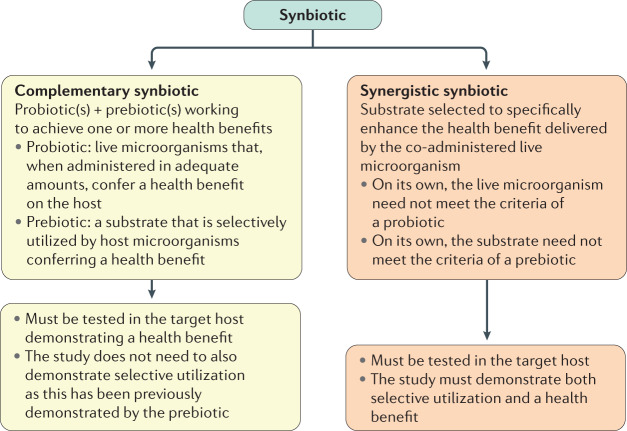Fig. 1. Synbiotic categories.
Synbiotics can be formulated using two approaches. A complementary synbiotic comprises a probiotic plus a prebiotic (more than one of each can be used), working independently to achieve one or more health benefits. Probiotic and prebiotic components of the complementary synbiotic must meet the minimum criteria, as stipulated previously12,13. A synergistic synbiotic is composed of a live microorganism and a selectively utilized substrate but neither needs to meet the minimum criteria stipulated previously for probiotics and prebiotics. Instead, these components are designed to work together, with the substrate being selectively utilized by the co-administered microorganism. The panel considered whether all synbiotics should be synergistic. However, the absence of such substances today speaks to the difficulty of achieving the required evidence. The panel judged that it was more important for the definition to be useful rather than hypothetical.

